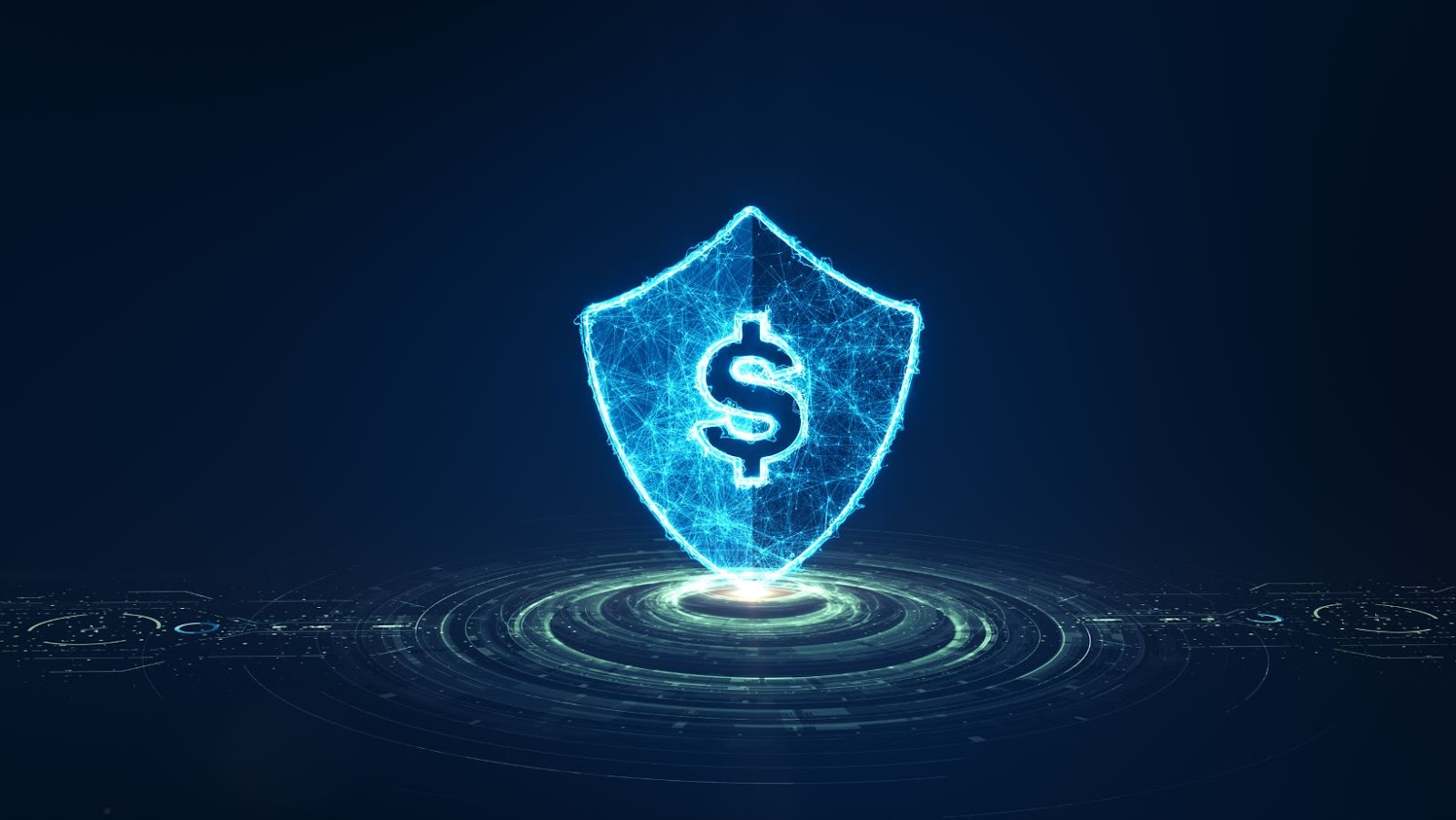The introduction of USDC has boosted the cryptocurrency world, as this is unlike any other stablecoin. Stablecoins are cryptocurrencies designed to be pegged to an asset with stable prices, such as the U.S. dollar or another fiat currency, gold, or oil.
Coinbase and Circle recently launched USDC (USD Coin) to create a reliable and stable currency for blockchain applications. USDC works similarly as many other digital currencies with its blockchain, but it differs in that it is backed by U.S. dollars and offers users full access to fiat funds stored in their accounts at any time. This makes it different from some of the more volatile alternatives available on the market today, and gives it unique advantages when compared to traditional stablecoins like Tether (USDT), TrueUSD (TUSD), Paxos Standard Token (PAX), DAI and Gemini Dollar (GUSD).
In this article we compare USDC with some popular stablecoins regarding usage and redeemability options, dollar-backing transparency, compliance measures and customer support networks.
Table of Contents
ToggleCoinbase and Circle Launch USDC Stablecoin With Purported Full Backing in US Dollars
Coinbase and Circle recently launched USDC, a new stablecoin supposedly backed by US dollars. While USDC is different from other stablecoins out there, the core idea behind it remains the same – to provide a reliable source of value and a store of value.
This article will examine what USDC is and how it stands out from the competition.
What is USDC?
USDC stands for USD Coin, a stablecoin issued by Coinbase and Circle. It is a fully collateralized US Dollar token, meaning each coin is backed 1:1 with a corresponding US dollar stored in reserve by either Coinbase or Circle. This US dollar reserve is held in multiparty banking accounts throughout the United States, ensuring that all USDC tokens are fully redeemable for US dollars.
USDC aims to provide a more secure, stable, and reliable form of digital money for use in any online business transactions or payments. It also allows users to convert their volatile cryptocurrencies into stablecoins that can be used anywhere without worrying about sudden price swings or market collapses.
USDC shares many similarities with high-profile stablecoins like Tether (USDT) and TrueUSD (TUSD). They have similar technical designs and operate within the same cryptocurrency ecosystem. The key difference with USDC is that it has greater clarity around the banking relationships required for the backing of each coin in circulation and higher levels of transparency over its operations compared to these more established rivals.
What makes USDC different from other stablecoins?
USDC has been issued by Centre, a consortium founded by Coinbase and Circle. The currency is designed to enable users to buy and pet U.S. dollar-pegged assets and settle transactions quickly and reliably. USDC has the same features as other fiat-backed stablecoins, but what makes it different is its purported full backing in U.S. dollars, something which, along with its predictability, adds to its stability relative to other cryptocurrencies like Bitcoin.
Circle and Coinbase have combined forces to provide USDC users with a range of features not available in other stablecoins such as transparency around reserve underlying assets, smart contract auditing for security compliance and strong regulatory oversight promoting industry best practices anti-money laundering (AML) compliance.

On top of that, both Cardano and Tron have also recently announced their support for USDC giving it access to more potential markets with further inherent benefits taking the volume of USDC from 4 million dollars at the end of 2019 up to 700 million dollars today (as of July 2020). As more projects join in the adoption of UDSC we may be seeing a new era where fiat-backed stablecoins become increasingly popular as supports: an essential cornerstone towards increasing adoption of cryptocurrency worldwide into mainstream markets in our increasingly digitally driven world.
USDC’s Backing
USDC is the stablecoin that Coinbase and Circle just launched. This stablecoin is purported to have full backing in US Dollars and is expected to revolutionise the crypto world.
This article will examine the difference between USDC and other stablecoins regarding its backing. Furthermore, we will discuss how USDC is different from other stablecoins, as well as the advantages that it offers.
What is the USDC’s full backing?
USDC, also called the “US Dollar Coin” (USDC), is a crypto-collateralized stablecoin jointly developed by Coinbase and Circle. As a fully collateralized, algorithmic stablecoin, USDC promises to be “100% backed by dollars held in designated accounts at multiple FDIC insured U.S. banks”. This full backing of the USDC allows for few concerns around the stability of its value compared to alternatives, as every USDC token is always redeemable at face value for a U.S. dollar.
This unique risk mitigation strategy has already drawn in a wide range of users and participants from across the cryptocurrency ecosystem looking for an easy way to store their wealth in USD without paying expensive wire fees or transaction costs associated with other methods like SWIFT transfers and debit cards.
The full backing support provided by USDC takes these worries away; each coin issued is 100% collateralized with corresponding fiat currency held on deposit, meaning that there are no fluctuations in the token’s price because it is anchored by liquid capital reserves managed independently by both Coinbase and Circle on behalf of their users.
What are the benefits of a full backing?
The USDC stablecoin offers a range of benefits for users, primarily stemming from its full backing in US dollars. By fully backing each USDC stablecoin issued with one U.S. dollar held in reserve, the issuers provide confidence in the value of the digital asset and its ability to stay pegged on a 1:1 basis with its fiat currency counterpart. This full backing eliminates the risk associated with reliance on other forms of collateral – such as cryptocurrencies – as a form of reserve. In addition, it eliminates any potential market volatility related to these more speculative assets.
In addition to capturing all of the advantages associated with a fully backed asset, users can realise significant time savings when using USDCstablecoins instead of traditional fiat currency solutions. With this digital asset, money can move around almost instantaneously – regardless of borders or bank-hours – for low or even no fees compared to other resources such as wire transfers which often come with high fees and delays due to external regulations and legacy infrastructure.
USDC’s Development
Coinbase and Circle recently launched a new stablecoin called USDC. They claim that USDC is backed one-to-one with US dollars, making it a legitimate digital dollar. But how exactly is USDC different from other stablecoins?
Let’s look at the development of USDC to understand the differences.
What is the role of Coinbase and Circle in USDC’s development?
Coinbase and Circle have collaborated to develop USDC, a fiat-backed stablecoin. The current cryptocurrency market environment has increasingly necessitated users having a pegged token that was freely tradeable and reliable against the value of major currencies.
To facilitate this project, both Coinbase and Circle committed to providing an equal level of trust for the USDC platform by offering its users a fiat-backed stablecoin that is legally compliant and has a fully collateralized peg with one US dollar. This collateralization is managed through a corresponding bank account held exclusively in Coinbase and Circle’s name identified only as “USDC Custody Account” on deposits. The funds are then used to purchase crypto assets whose value matches the dollars deposited in the “USDC Custody Account.”

The ultimate goal for this collaboration is to provide stability within the decentralised economy by offering citizens access to reliable digital currency alternatives. Coinbase and Circle offer comprehensive compliance checks that ensure coin holders are periodically audited while adhering to KYC (Know Your Customer) laws established within various regulatory jurisdictions. This ensures legal requirements in each region can be met while granting investors greater financial freedom through their newfound ability to own digital currency backed by actual fiat deposits.
What are the implications of Coinbase and Circle’s involvement?
The involvement of Coinbase and Circle in the development of the USDC stablecoin has a range of implications for the cryptocurrency ecosystem.
Firstly, it allows users to easily convert US dollars into digital dollars, allowing them to access digital currency services more easily than other options. Furthermore, it brings greater legitimacy and trustworthiness to the digital currency market as Coinbase and Circle are some of the most trusted entities in this space.
It also greatly increases transparency as Coinbase and Circle have committed to conducting regular audits that prove their reserves are always fully backed by USD. This assurance is fundamental for users looking to use stablecoins for long-term saving or as an intermediary for transferring value between different platforms or markets.
Finally, USDC opens up new opportunities for organisations looking to tap into this new form of capital by quickly issuing their stablecoins without going through a lengthy approval process from banks and regulators.
All these factors ensure that USDC is a valuable asset in the crypto-sphere today and has tremendous potential given its capabilities going forward.
What are the potential risks of USDC?
USDC is a centralised stablecoin, which is underpinned by a central counterparty. This can create operational and solvency risks. Therefore, users should be aware of several potential risks associated with USDC before investing.

First, users may not enjoy the same anonymity as those with decentralised stablecoins such as Tether (USDT) due to its centralised nature. It also means that instead of relying on an algorithm like other DeFi projects, USDC relies on two well-known companies Coinbase and Circle to guarantee its reserves. They have both pledged to hold their US dollar reserves in a segregated account at a regulated bank for each fiat-backed token issued.
Additionally, USDC is subject to price risk due to volatility of the US dollar against other currencies in the global market. As such investors must be prepared for the risk of changes in exchange rates when converting from one currency to another. Lastly, it is important for investors using fiat-backed stablecoins to remember that these tokens are still subject to counterparty risk due to failure of auditing or proper oversight by Coinbase and Circle themselves.
tags = Crypto exchange Coinbase, USDC stablecoin, U.S. dollars, iOS and Android apps, coinbase usdc usd circle july usdclightbloomberg, U.S.-based customers, Coinbase Pro, Coinbase Wallet





